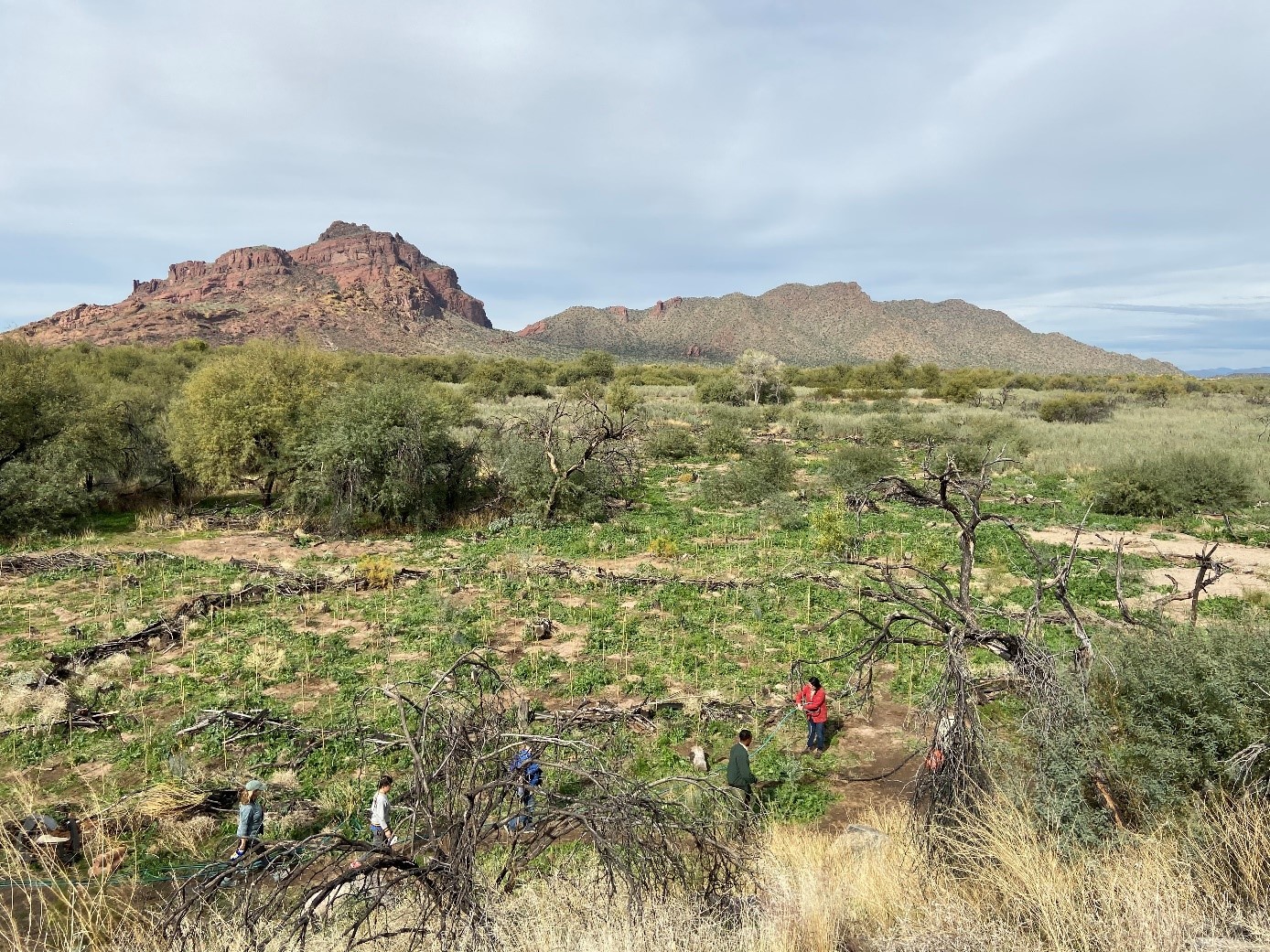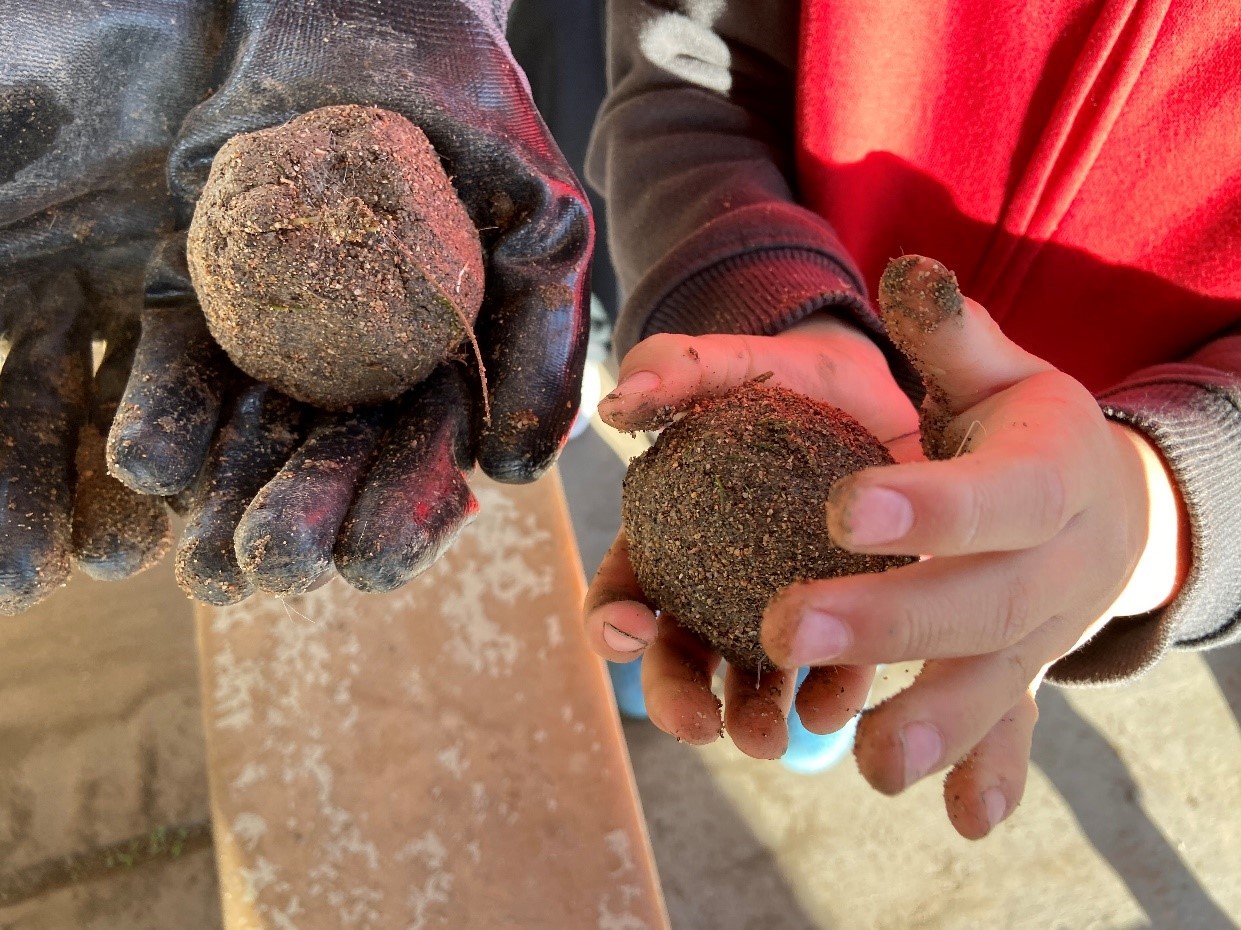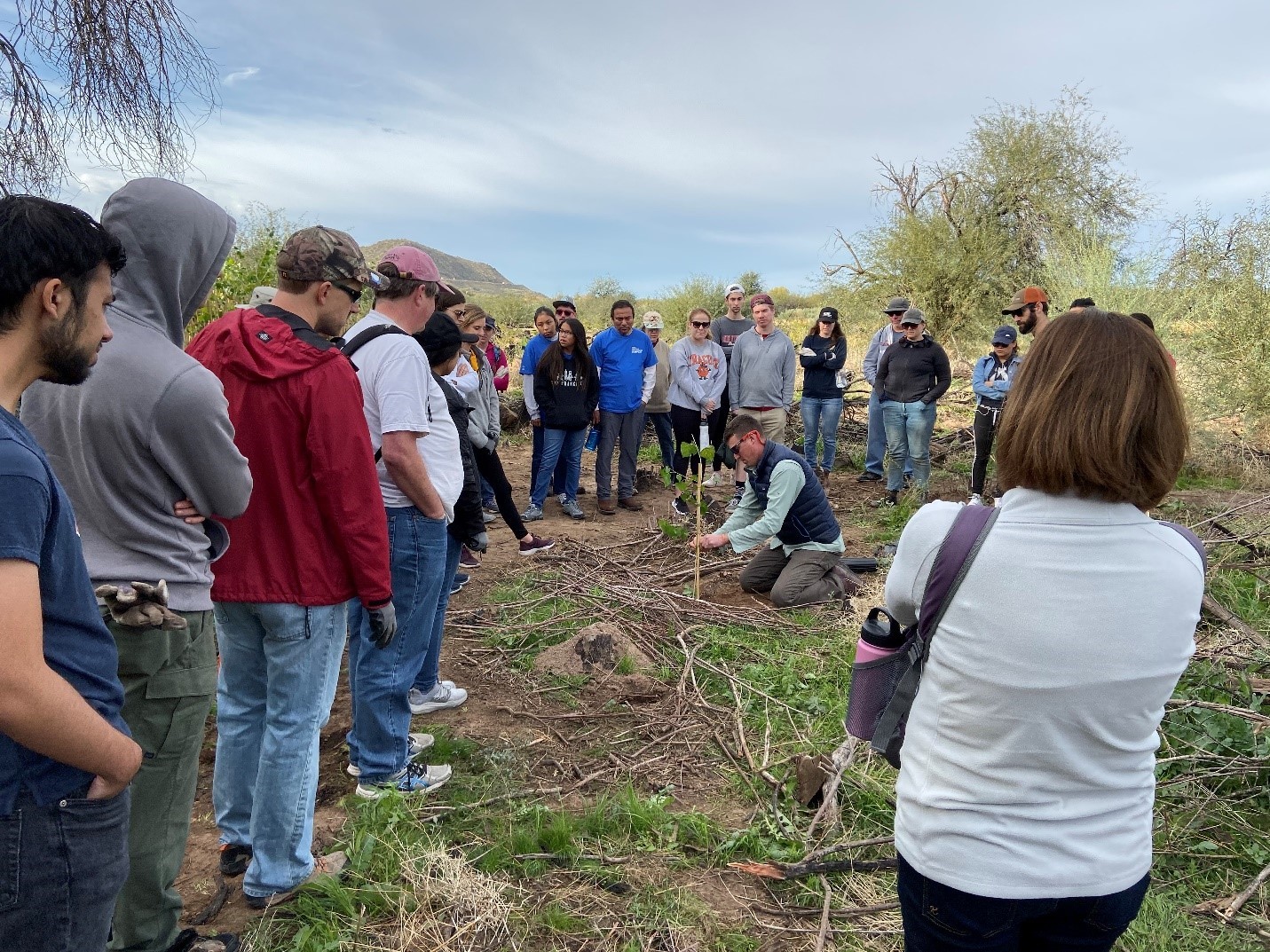Phoenix, Arizona is not always well understood when it comes to where water comes from or how water makes it to our faucets. However, surface water makes its way from the Salt and Verde watersheds to provide a majority of the water supplies Phoenix’s communities depend on. This critical resource is also extremely valuable for recreation and tourism, wildlife habitat and much more. To ensure the continued health of this essential water resource, a broad coalition of local municipalities, corporations, and nonprofit organizations are coming together through direct action in restoration stewardship of our unique desert rivers – including on the Lower Salt River.

Overlooking the Lower Salt River Restoration Site.
The Lower Salt River Riparian Restoration Project is a landscape-scale effort to improve the health and function of the riparian and aquatic system – to ensure clean and abundant water, improve wildlife habitat, and enhance the recreational experience of thousands of visitors each year. The project began after the Cactus Fire burned much of the riparian area between the Salt River and the Bush Highway in spring 2017. With the loss of invasive species from the fire, there was a unique opportunity for further removal of invasives and the reestablishment of native vegetation in the area.
On December 7, 2019 the National Forest Foundation in collaboration with Northern Arizona University, the Tonto National Forest, Arizona Audubon Society, the cities of Phoenix and Scottsdale, and Boeing Arizona, took advantage of this restoration opportunity and held a family-friendly volunteer event near the Phon D. Sutton Recreation Site.
In addition to the many partners and community members involved in organizing the event, volunteers from ASU, Intel, Science Care, Stryker, SRP, Central Arizona Conservation Alliance, and the Sonoran Insiders created a lasting connection with their watershed by participating in the restoration event. Many shared the experience with their friends and families!

Handmade native seed balls!

NAU Project Leader Chris Updike showing the volunteers how to plant a tree.
The activities included seed ball making and distribution, Cottonwood, Mesquite and Coyote Willow planting, native seed collecting and invasive weed removal. With the help of around 150 people, it is estimated that over 700 native trees were planted! The efforts of these volunteers will not only benefit the long-term health of the immediate area surrounding the restoration site, but the greater community of the Salt River Valley as well.

